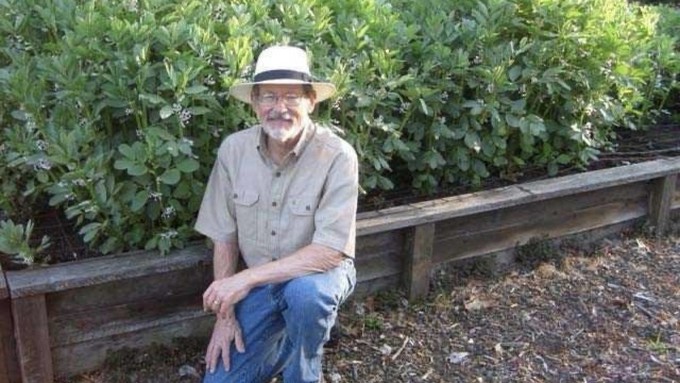
After heart surgery, popular garden expert changed his life with homegrown vegetables, fruit

"Farmer Fred" Hoffman will speak at the Feb. 8 meeting of the Sacramento Rose Society. Courtesy Fred Hoffman
Farmer Fred will present his personal story of heart-healthy gardening and discovery at 7:30 p.m. Thursday, Feb. 8, at the club’s meeting at the Shepard Garden and Arts Center in McKinley Park. The public is welcome. Admission and parking are free.
Farmer Fred knows firsthand how his own heart-healthy garden changed his life. In March 2012, the award-winning radio host was diagnosed with FOUR cholesterol-blocked heart arteries. His doctor also told him he had full-blown Type 2 diabetes. (His A1C was 10.4.)
He underwent quadruple coronary artery bypass graft surgery, then embarked on the long road to healing. That included a makeover of his diet.
Farmer Fred lost more than 60 pounds – and kept the weight off. An avid cyclist, he rides his bike more than 100 miles a week. He no longer needs to take diabetes medication and is active as ever in his garden and the community.
His secret? Growing, and eating, heart-healthy fruits and vegetables, loaded with fiber. That includes artichokes, blueberries, apricots, shell beans and green peas.
Farmer Fred will share how anyone can help their own heart health via fiber-packed fruit and vegetables. Besides his personal health experience, he’s also one of the leading gardening experts in California. A lifetime master gardener, Fred has been certified by the UC Cooperative Extension program for more than 40 years and has logged well over 10,000 hours as a master gardener volunteer.
Most Sacramentans know Farmer Fred from his four decades as host of his award-winning radio shows, “Get Growing with Farmer Fred,” “The KFBK Garden Show” and “The KSTE Farm Hour.” Now he shares his talents with a national audience online via his podcast, “Garden Basics with Farmer Fred.”
His garden has evolved, too. He and his wife, Jeanne, traded their 10-acre ranchette in Herald for a suburban home and backyard in Folsom. Although his garden’s footprint is much smaller, it’s still packed with the heart-healthy foods that changed his life.
Come hear Farmer Fred and learn how you, too, can make a difference in your own heart health. Shepard Center is located at 3330 McKinley Blvd., Sacramento.
Details: https://sacramentorosesociety.org/ or www.farmerfred.com.
Comments
0 comments have been posted.Sacramento Digs Gardening to your inbox.
Sites We Like
Garden Checklist for week of July 21
Your garden needs you!
* Keep your vegetable garden watered, mulched and weeded. Water before 8 a.m. to reduce the chance of fungal infection and to conserve moisture.
* Feed vegetable plants bone meal, rock phosphate or other fertilizers high in phosphate to stimulate more blooms and fruiting. (But wait until daily high temperatures drop out of the 100s.)
* Don’t let tomatoes wilt or dry out completely. Give tomatoes a deep watering two to three times a week.
* Harvest vegetables promptly to encourage plants to produce more. Squash especially tends to grow rapidly in hot weather. Keep an eye on zucchini.
* Pinch back chrysanthemums for bushy plants and more flowers in September.
* Remove spent flowers from roses, daylilies and other bloomers as they finish flowering.
* Pinch off blooms from basil so the plant will grow more leaves.
* Cut back lavender after flowering to promote a second bloom.
* It's not too late to add a splash of color. Plant petunias, snapdragons, zinnias and marigolds.
* From seed, plant corn, pumpkins, radishes, winter squash and sunflowers.